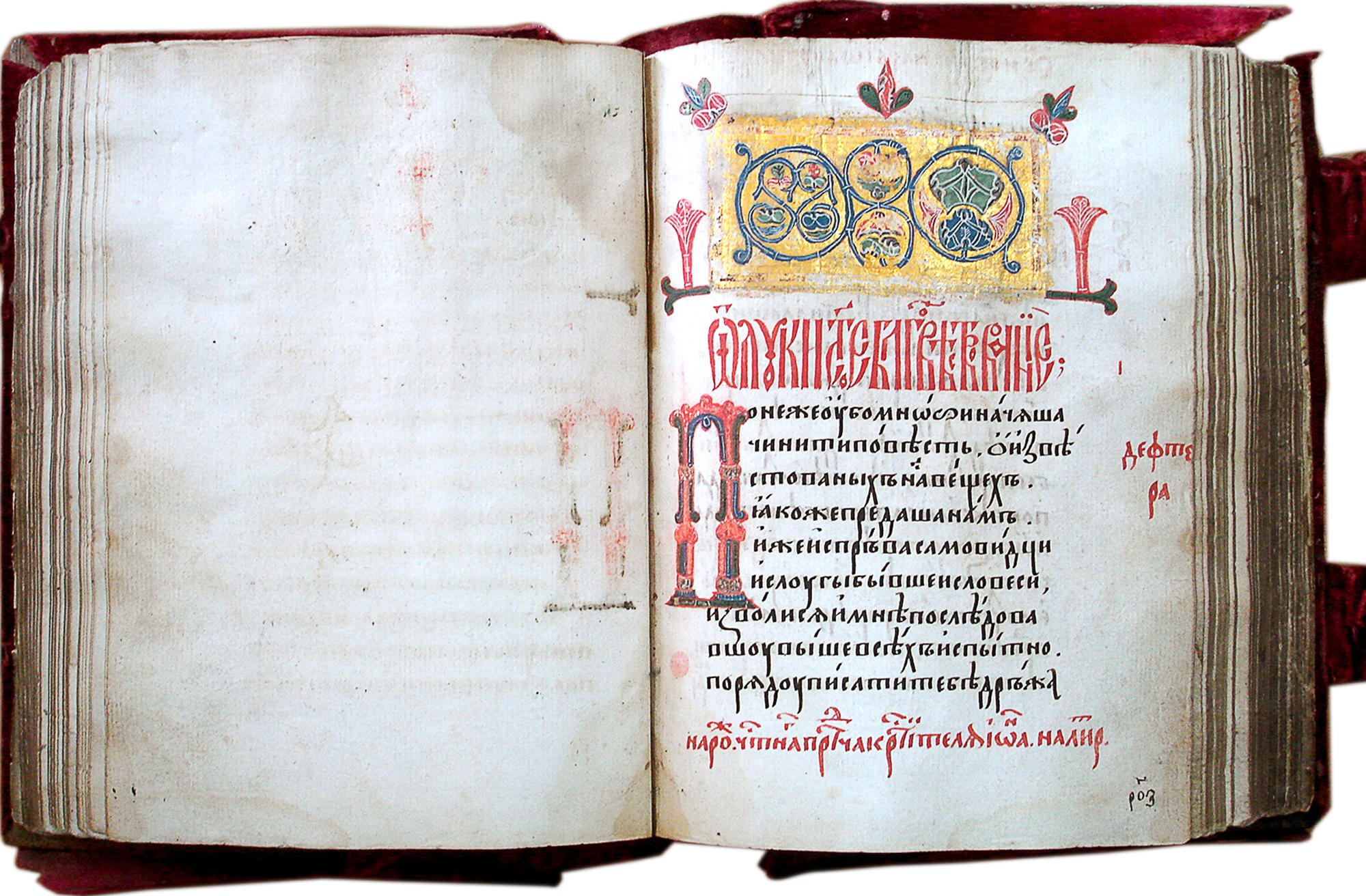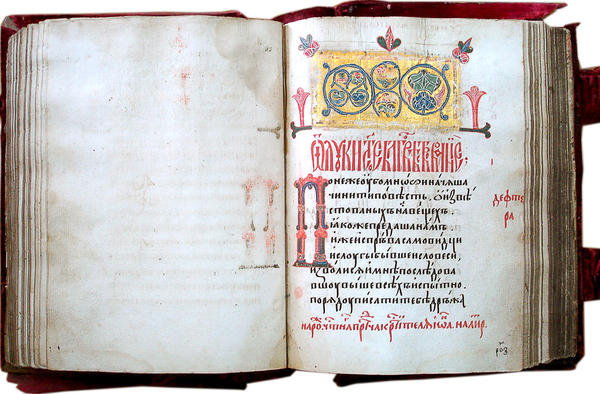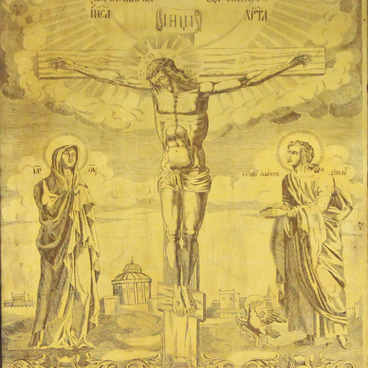The illuminated gospel is a fine example of a manuscript book created in the middle of the 16th century. The monument of history and culture is kept in the collection of ‘Rare books’ of the United Museum of Local History of the Republic of Mordovia and is one of the oldest exhibits in the collection.
The gospel is an early Christian work that chronicles the earthly life of Jesus Christ and includes the four books of the New Testament from Mark, Matthew, John, and Luke. This is a book, which describes the birth, earthly ministry, miracles, death, resurrection and ascension to heaven of Jesus Christ. The ancient text is written in Cyrillic in a clear half running hand in one column in dark brown ink. Head ornaments and initial letters (big starting letters) were created using tempera and gold leaf. Oak boards lined with velvet formed the book hard cover.
The Gospel design is sustained in an elegant style following the old Byzantine tradition. Bright and vibrant colors are a characteristic feature of the manuscripts written in the Byzantine tradition. The master took a floral motif as a basis, carefully drawing on paper a lily with sharp leaves and flowering shoots of a trefoil. The main text is preceded by headpieces with simple geometric and floral ornaments on a gold background. The main sections of the book are decorated with large frames, inside which curls of different shapes and sizes, curved lines, geometric shapes and petals are depicted.
On the rewriting of the Gospel, the master worked meticulously and patiently, despite great strain and hard work. The creation of such manuscripts required perseverance, willpower, dedication and love for their work, because it was necessary not only to transfer the text without errors and inaccuracies. A significant part of the time was occupied by the decorative design of the book.
As a rule, a Gospel contains miniatures depicting the authors of each of the 4 evangelical narrations (Apostles Mark, Matthew, Lucas and John). In this copy, the master left blank sheets for miniatures, but for reasons unknown, the images were not created. Probably, the customer was in a hurry and took the book, not waiting for the completion of the work. Scholars also suggest that two people worked on the Gospel - a copyist and an artist. Perhaps the person who was supposed to draw the images of Matthew, Mark, Luke, and John could not or did not have time to complete his part of the task.
The gospel is an early Christian work that chronicles the earthly life of Jesus Christ and includes the four books of the New Testament from Mark, Matthew, John, and Luke. This is a book, which describes the birth, earthly ministry, miracles, death, resurrection and ascension to heaven of Jesus Christ. The ancient text is written in Cyrillic in a clear half running hand in one column in dark brown ink. Head ornaments and initial letters (big starting letters) were created using tempera and gold leaf. Oak boards lined with velvet formed the book hard cover.
The Gospel design is sustained in an elegant style following the old Byzantine tradition. Bright and vibrant colors are a characteristic feature of the manuscripts written in the Byzantine tradition. The master took a floral motif as a basis, carefully drawing on paper a lily with sharp leaves and flowering shoots of a trefoil. The main text is preceded by headpieces with simple geometric and floral ornaments on a gold background. The main sections of the book are decorated with large frames, inside which curls of different shapes and sizes, curved lines, geometric shapes and petals are depicted.
On the rewriting of the Gospel, the master worked meticulously and patiently, despite great strain and hard work. The creation of such manuscripts required perseverance, willpower, dedication and love for their work, because it was necessary not only to transfer the text without errors and inaccuracies. A significant part of the time was occupied by the decorative design of the book.
As a rule, a Gospel contains miniatures depicting the authors of each of the 4 evangelical narrations (Apostles Mark, Matthew, Lucas and John). In this copy, the master left blank sheets for miniatures, but for reasons unknown, the images were not created. Probably, the customer was in a hurry and took the book, not waiting for the completion of the work. Scholars also suggest that two people worked on the Gospel - a copyist and an artist. Perhaps the person who was supposed to draw the images of Matthew, Mark, Luke, and John could not or did not have time to complete his part of the task.



